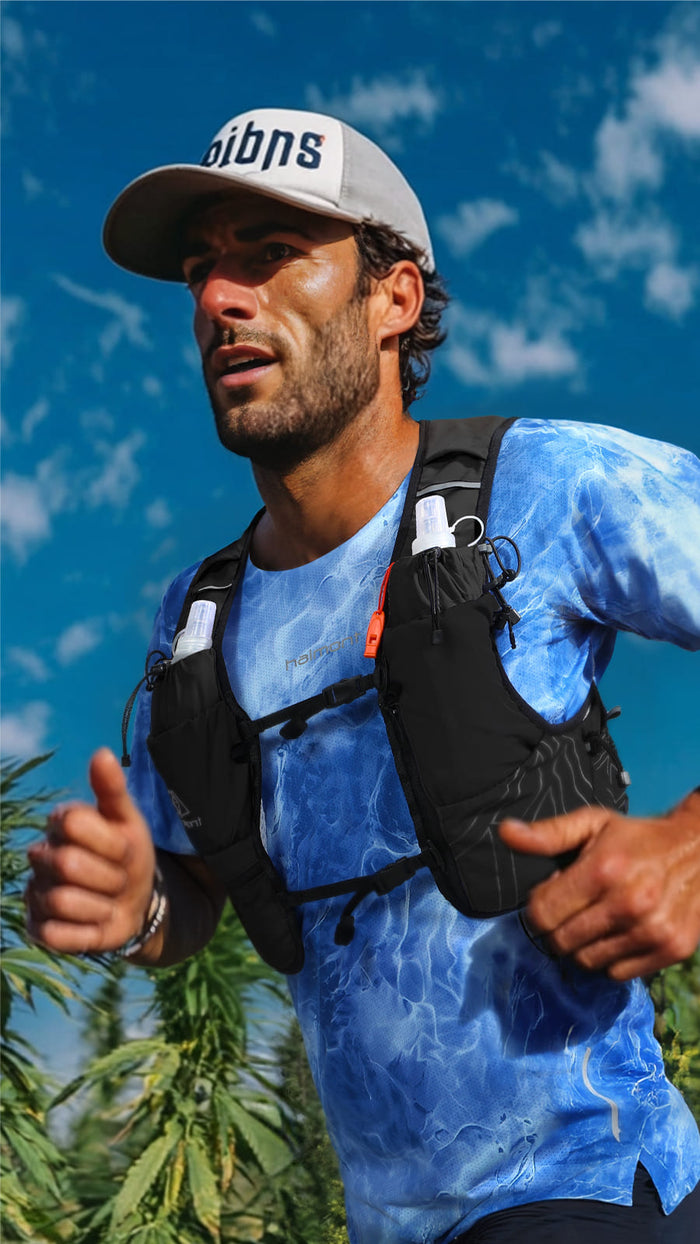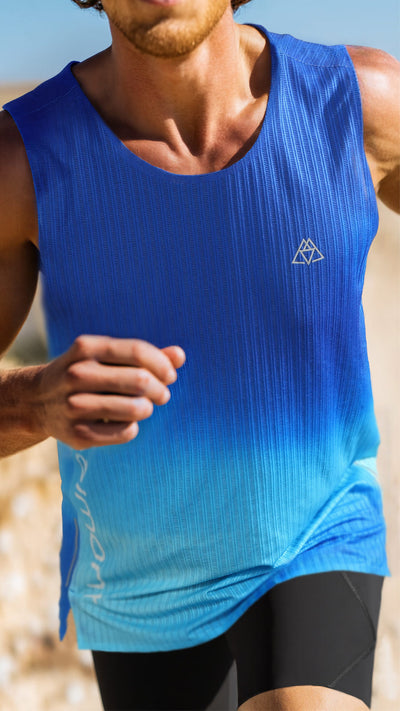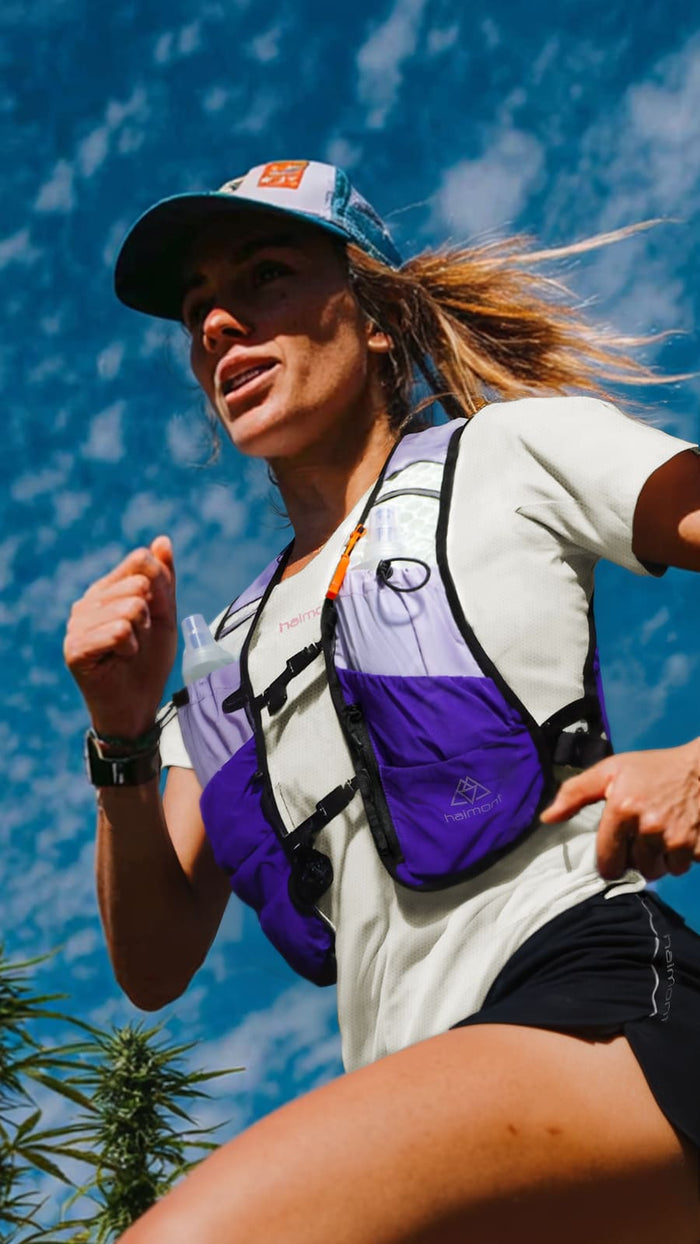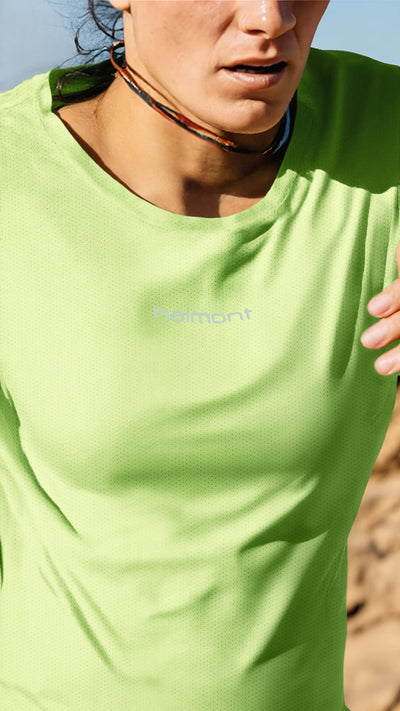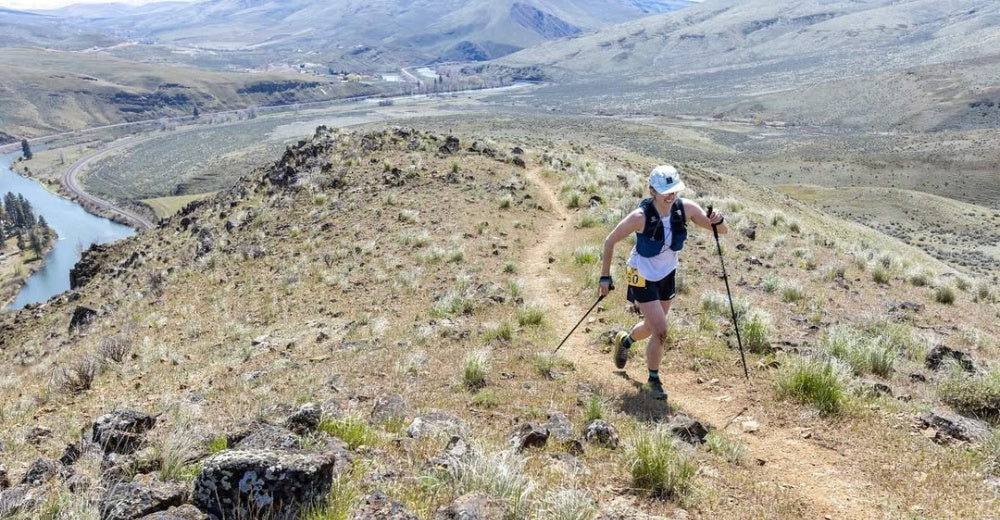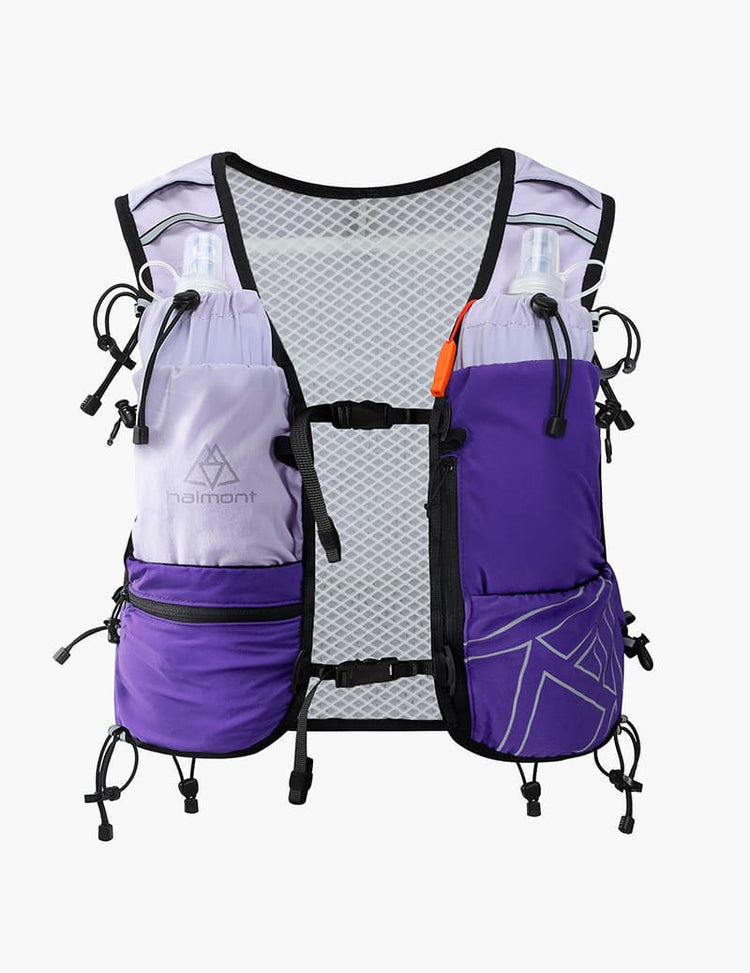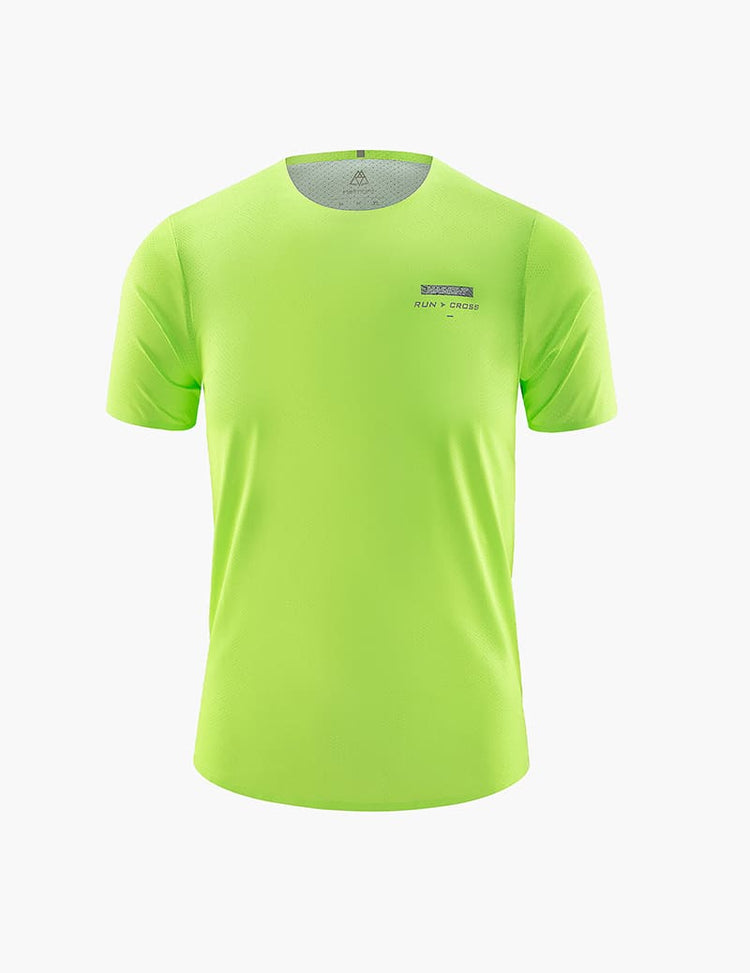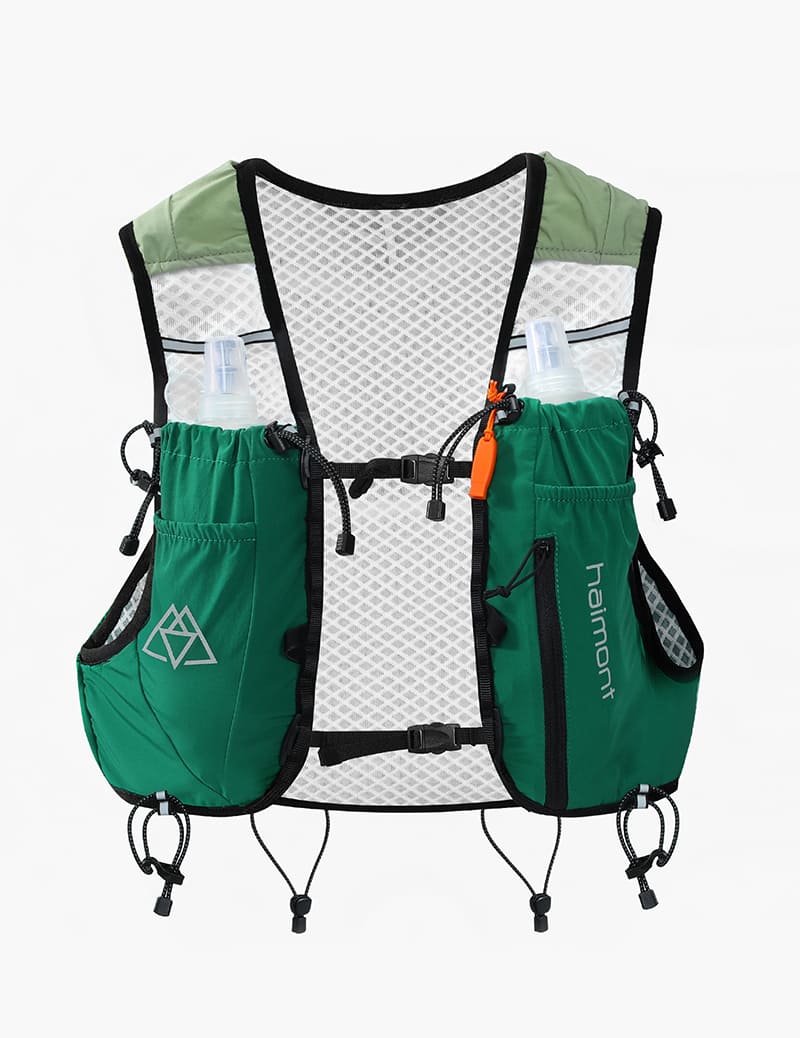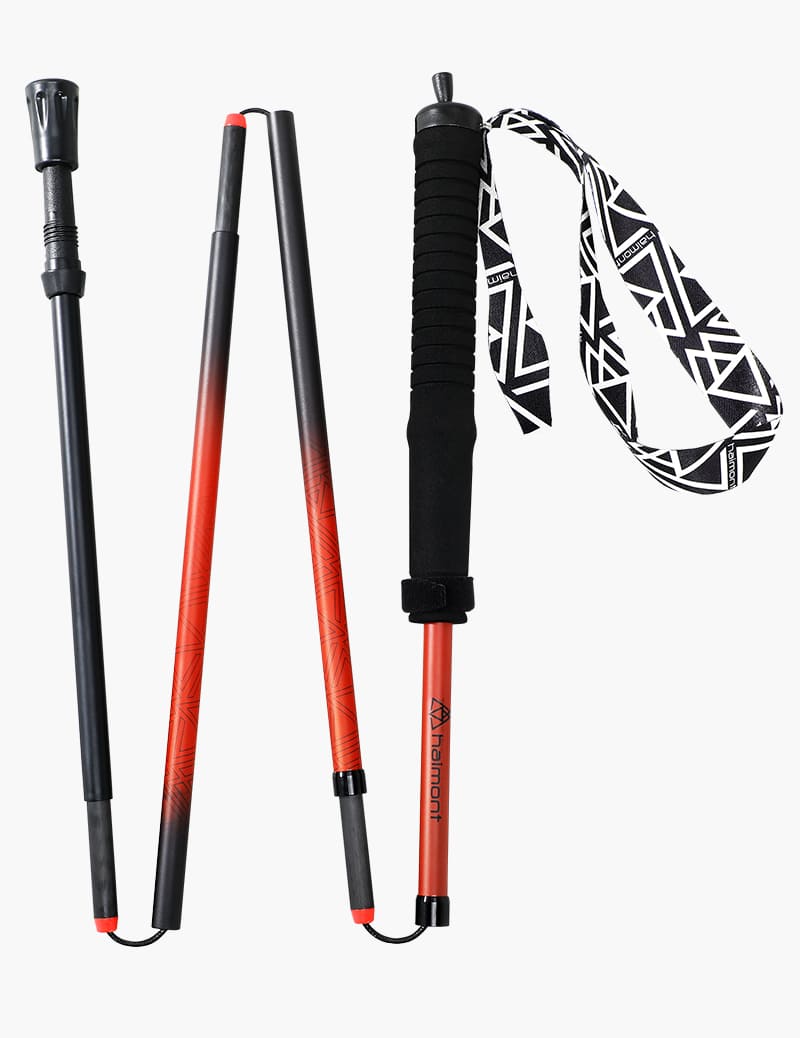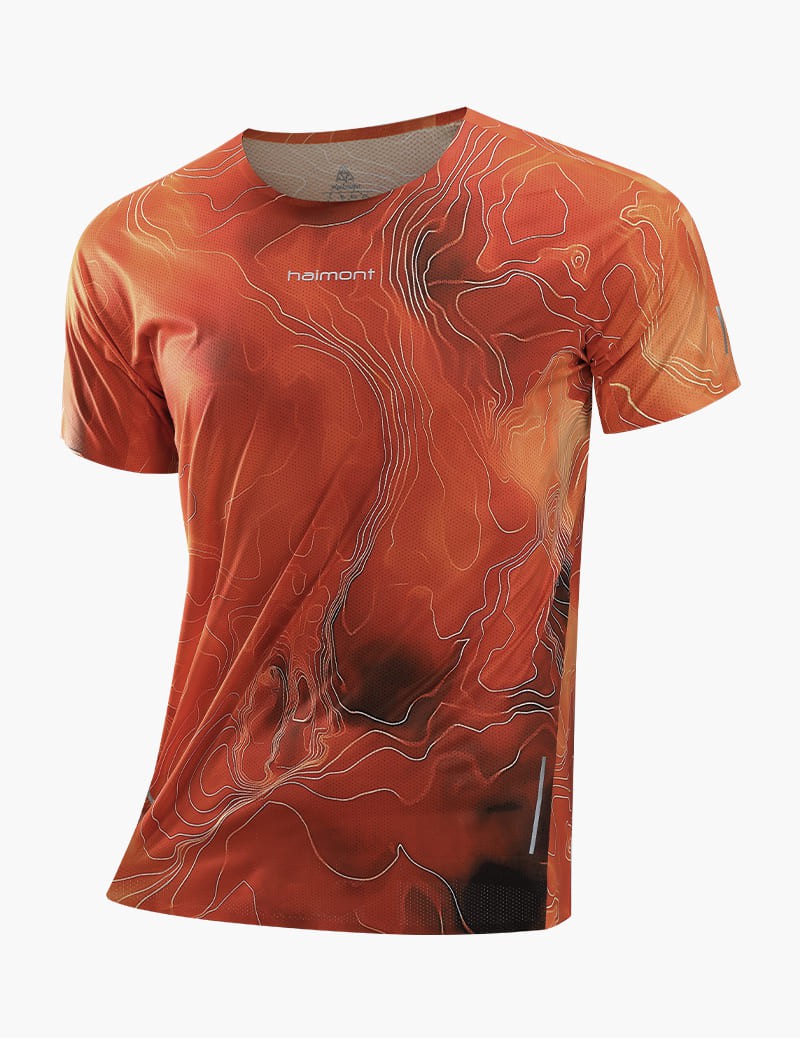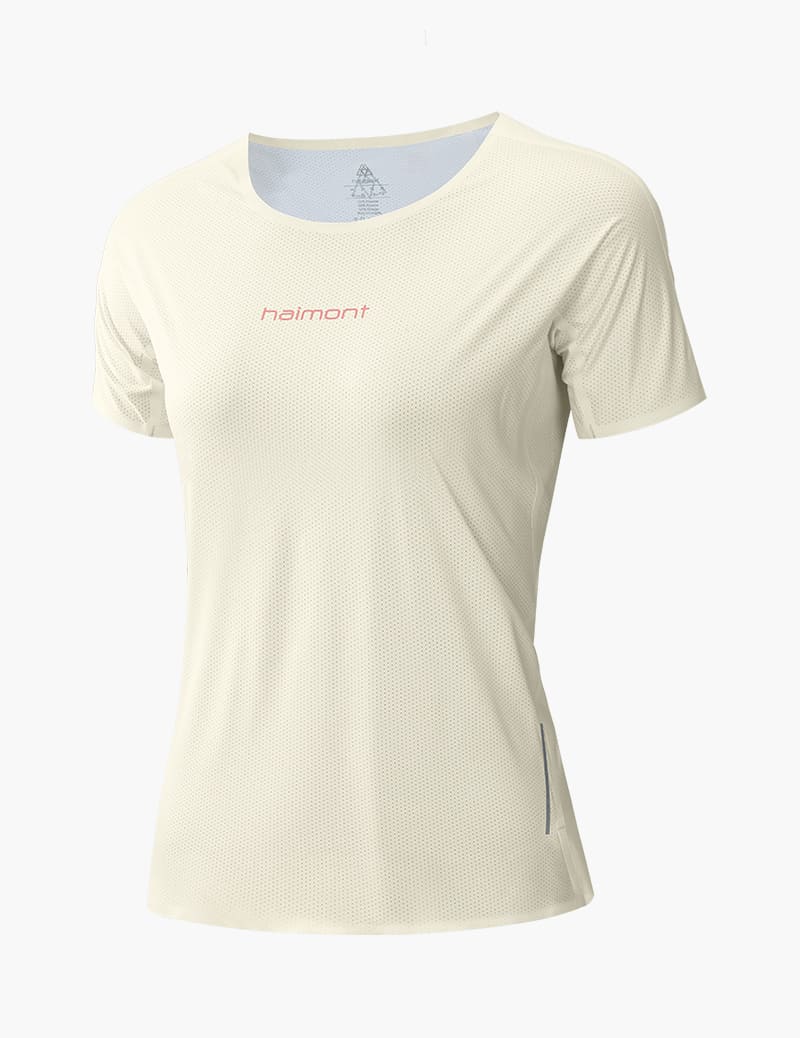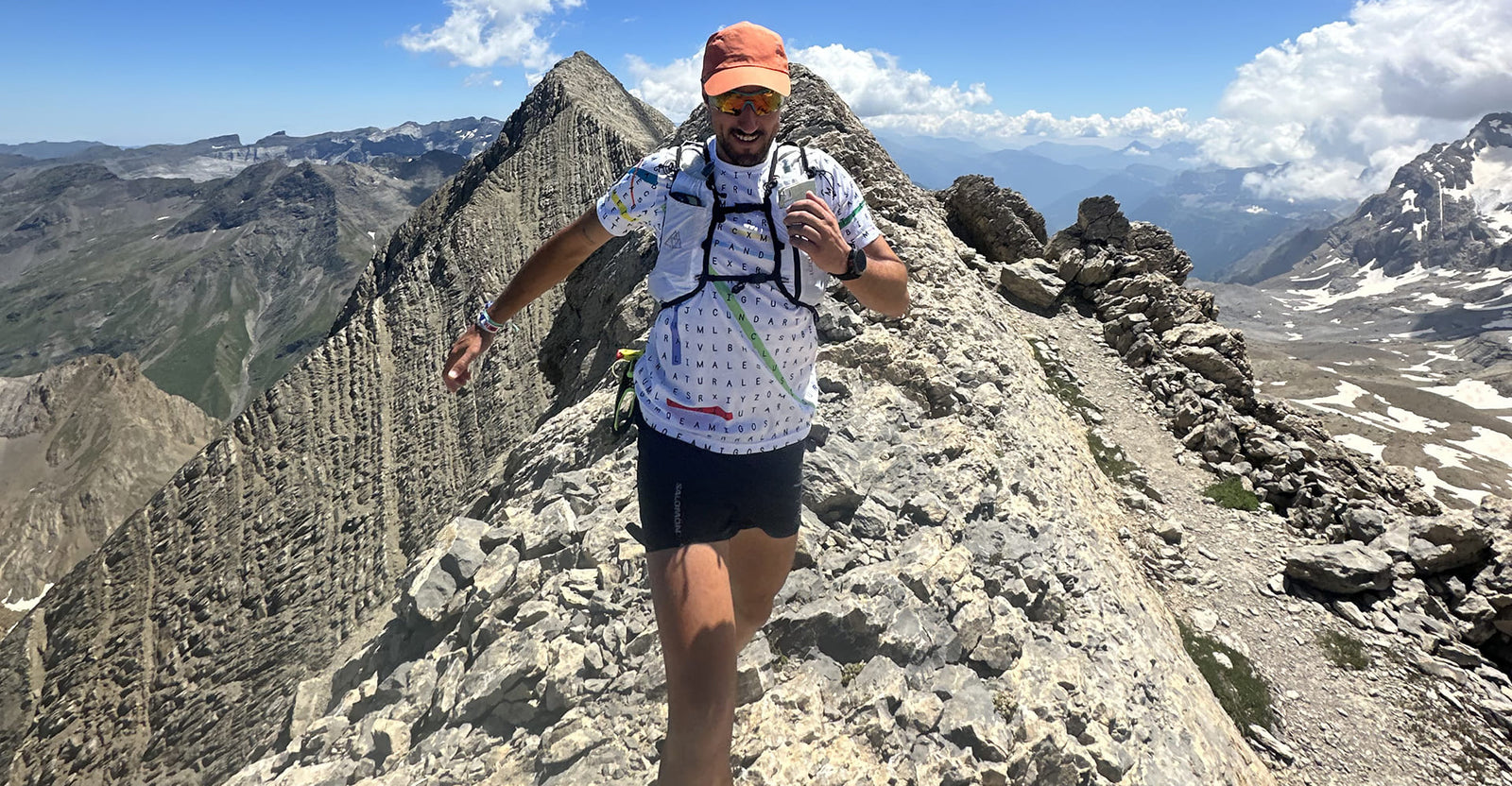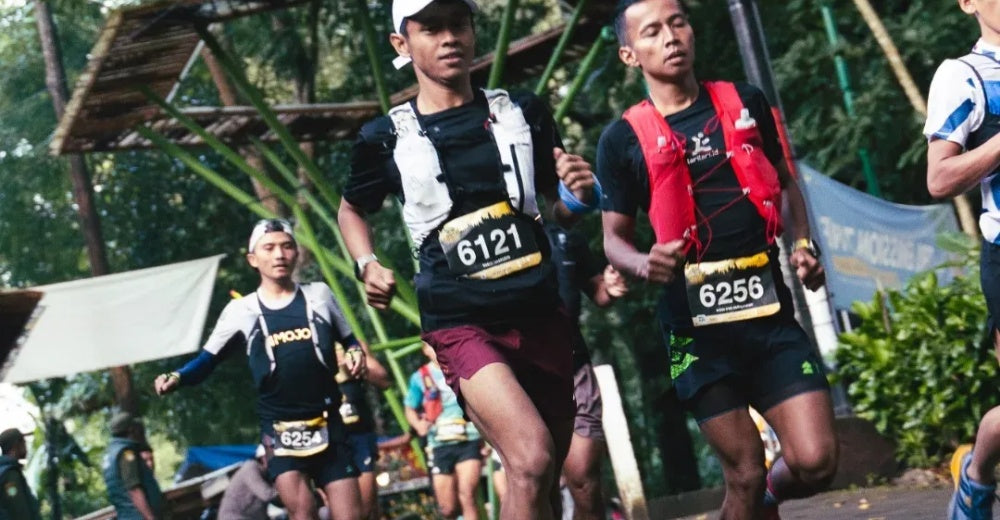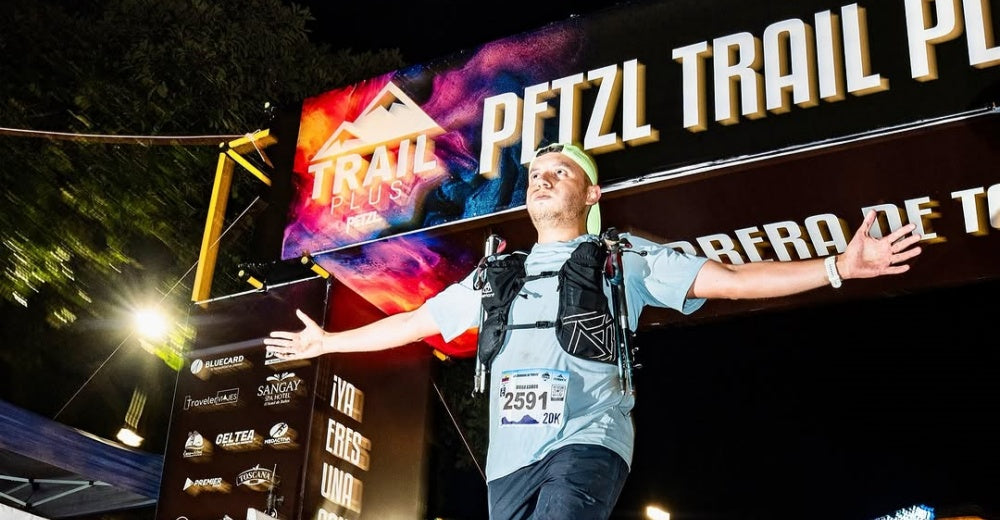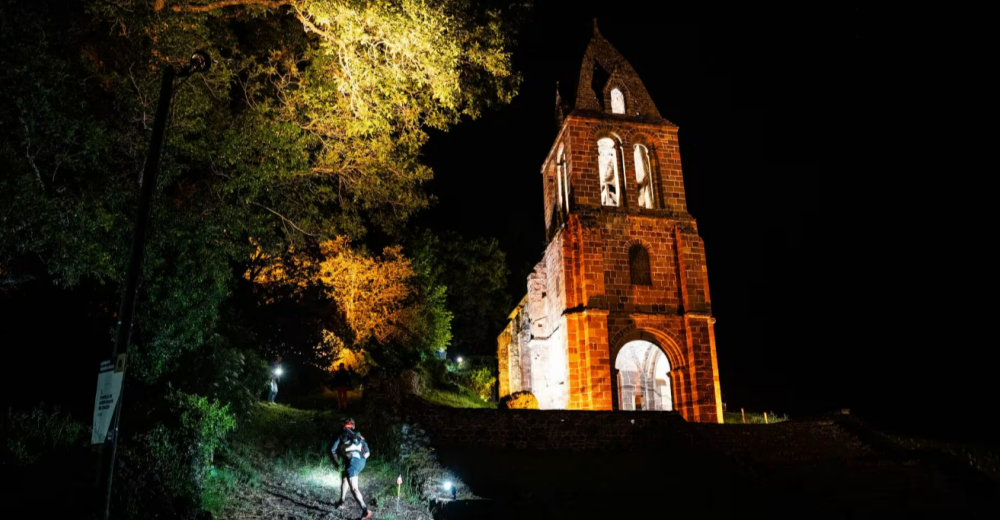Table of contents
Track overview: "sawtooth battle" from valley to ridge
- Distance: 50 kilometers (31 miles)
- Cumulative climb: about 10,000 feet (about 3050 meters)
-
Route features:
- The first section is a gradually rising forest dirt road
- The middle section is to cross the exposed ridges many times, with strong wind and narrow roads
- The last section is a technical downhill + multiple short steep up hills (commonly known as "devil's gear")
Three key points
- The ridge wind area before CP3: It is very easy to encounter gusts of wind, it is recommended to take out the trekking poles in advance.
- Multiple technical downhills after CP4: Leg strength and equipment technology are pushed to the limit.
- The last 5K steep slope + down the valley: test your last supply strategy when you are exhausted.
Climate analysis: The wind here never follows the rules
- Starting time: usually 5:00 in the morning (starting in the dark)
- Severe temperature difference:
- Starting point: may be as low as 3℃~6℃
- Ridge: wind speed can reach 30~50km/h, body temperature below -3℃
- Afternoon valley: temperature can rise to above 25℃
- Characteristics of mountain wind:
- Strong crosswind, especially on exposed ridges
- Gusts come suddenly, often catching people off guard
Supply station configuration: the "watershed" of rhythm and energy
|
Aid Station |
Distance |
Features |
Recommended Fueling Strategy |
|
CP1 |
7KM |
Gentle forest slope |
Focus on hydration; no need for energy supplementation |
|
CP2 |
15KM |
Start of mountain ridge |
Begin energy intake (1 energy gel + electrolyte tablet) |
|
CP3 |
24KM |
Exposed ridge with strong wind |
Water supply limited – strongly recommend carrying a water bladder |
|
CP4 |
33KM |
Steep descent after high point |
Salt capsules + carbohydrate intake + chewable foods |
|
CP5 |
42KM |
Bottom of "Devil's Slope" |
Mental fatigue zone – caffeine-based energy gels recommended |
Equipment Recommendation Guide
The mountain wind is merciless, and the drop is never soft. A real ridge battle requires not only willpower, but also your understanding of equipment details.

Backpack: Your "Central Station of Action"
Yakima's routes have extremely high terrain diversity and fast-paced changes. The backpack must meet the three key points of "quick switching + stable center of gravity + partitioned storage".
Suggested functions:
- The capacity should be 5L~10L (moderate off-road distance + moderate supply points).
- The front chest should have an adjustable chest strap to prevent jumping.
- The carrying system should be fit and breathable, and take into account the stability of the center of gravity.
- The trekking pole hanging point (front hanging or rear insertion) is convenient for quick switching midway.
- The main compartment should be layered, and can hold windbreakers, energy supplies, and spare socks.
- The front side should be equipped with a soft water bottle bag + energy gel/salt pill bag.
Alternative suggestions:
- With water bag channel (back water bag + front bottle combination).
- The shoulder strap is equipped with an emergency whistle and a small safety bag.
Trekking poles: the third leg, also the anchor point in the wind
Yakima's iconic ridge wind section + devilish downhill + gusts make trekking poles a must-have.
Recommended choices:
- Carbon fiber is recommended for material (lightweight + strength).
- Three-fold/four-fold folding (easy to store).
- With adjustable wrist strap to prevent the pole from flying.
- Tungsten steel tip is recommended, which has better grip than ordinary rubber tip.
- Foam + non-slip design is recommended for the handle, taking into account comfort and grip.
Usage tips:
- Deploy 10 meters in advance for the uphill section to avoid panic in an emergency.
- Double poles or one pole are recommended for alternating fulcrums for the downhill section.
- When the wind is strong, one pole can be supported outside and one pole can be supported inside to form a "tripod in the wind" steady state.
Clothing system: Strategies for dealing with drastic temperature differences + sudden changes in wind speed
The climate of Yakima 50K is extremely drastic. The starting temperature may be as low as 5℃, and the body temperature in the afternoon sun may reach 25℃. Body temperature management is extremely critical.
Top loading suggestions:
|
Layer |
Recommended Gear |
Reason |
|
Base Layer |
Quick-dry, breathable short/long sleeve performance shirt |
Moisture-wicking to keep dry; prevents cold wind from entering |
|
Mid Layer (optional) |
Lightweight thermal layer |
To stay warm in low temperatures at the start; remove before CP1 |
|
Outer Layer (mandatory) |
Ultralight windbreaker / water-repellent softshell jacket |
For warmth and wind protection on ridgelines; shields against sudden cold |
Bottoms recommendations:
- Quick-drying functional running pants (shorts + compression shorts or =Three-quarter compression pants).
- Seamless underwear to avoid long-term friction.
- Running pants with side pockets are convenient for temporary storage of salt pills/energy gels.
Other suggestions:
- Hats: It is recommended to combine duck tongue + headscarf, sun protection on the ridge + warmth at the bottom of the valley.
- Sunglasses: The ultraviolet rays on the ridge are strong, and they can prevent snow blindness.
- Gloves: windproof, scratch-proof, and more stable to control trekking poles.
Shoe and sock combination: stable + ground-biting + anti-wear
Shoe suggestions:
- The midsole has a certain cushioning ability (adapting to long-distance drop).
- The rubber sole is wear-resistant and has deep engraving (adapting to gravel roads and bare rocks).
- The upper is breathable but not too mesh (prevents wind and cold from entering).
- The shoe last is recommended to be moderately wide to avoid nail collision when going downhill.
Socks suggestions:
- Special socks for trail running: thick sole, arch support, non-slip.
- You can prepare a pair of dry socks (CP3 replacement), moisture-proof and anti-friction.
- High-tube compression socks can also be considered for calf insulation and support.
Detailed accessories suggestions: The gap between life and death is often in small equipment
|
Gear |
Recommendation Reason |
|
Trekking Pole Gloves |
Anti-slip grip, protection against wind and cramps, enhances grip sensitivity |
|
Electrolyte Tablets/Salt Pills |
Take 1 per hour to maintain electrolyte balance and prevent cramping |
|
Energy Gels/Bars |
1 per hour; consume before climbs; bring 6–8 total |
|
Emergency Blanket |
Lightweight, windproof, and prevents hypothermia; essential for every runner |
|
Whistle + Offline Map |
For GPS instability and blind spots in valleys; useful in emergencies |
|
Headlamp |
Essential if running into the evening/dark; better with spare batteries |
|
Band-Aids / Anti-chafe Balm |
Apply on friction-prone areas (feet, shoulders, chest) to prevent blisters or wounds |
|
Backup Soft Flask |
In addition to main water source, for wind-exposed areas or emergencies |
Recommended tactical configuration for quick storage and switching
|
Position |
Recommended Items |
|
Front Chest Flask Pouch |
Water + Energy Gels + Salt Capsules |
|
Chest Zipper Pocket |
Electrolytes, Medications, First Aid Patches |
|
Side Waist Stretch Pouch |
Windbreaker / Gloves / Buff – suitable for quick on-off access |
|
Main Back Compartment |
Food + Spare Clothing + Emergency Blanket + Map and Other Gear |
|
Trekking Pole Attachment |
Recommend front and back attachment points for quick access and switching |
Here, each piece of equipment is not an accessory, but a language for you to communicate with the wind, the mountains, and the drop. If you choose the right ones, you will not only "finish" the 50K, but also have a clear negotiation with your limits.
Stories of trail runners
The wind has begun to whisper before the starting line
At 4 a.m., Yakima Valley. The temperature was so low that it was hard to breathe. The 5℃ air formed mist between the runners' breaths. A bunch of headlights were like blue probes in the night, slowly sweeping across the ground, the toes of shoes, and each other's faces.
In the crowd, I noticed a quiet middle-aged runner. He did not insert the trekking pole behind the backpack like others, but held it with one hand, and the tip of the pole touched the ground, like the confirmation before the old shepherd explored the road.
"Here comes the third time." He smiled at me, his voice a little blurred in the wind, "The first time I ran, I was blown silly by the wind on the first ridge."
In 2019, he participated in the Yakima Skyline for the first time. The wind speed was as high as 40km/h that year, and the exposed ridges stopped many high-spirited runners halfway. He was one of them - his knee was sprained when going downhill, and the wind swept him away from the rhythm and confidence.
"I thought it was because my equipment was not good enough, so I changed my shoes and bought new breathable clothes. But when I came back the next year, I realized the real question was - are you willing to negotiate with this mountain." When he said the word "negotiate", his eyes penetrated the darkness, as if the mountain was waiting for you somewhere ahead, calm and collected.
Physics on the ridge: When the wind becomes the third leg
After CP3, the mountain suddenly rose. Loose rocks and exposed dirt roads cut a jagged ridgeline. It was already bright, and the sun pulled the front clear, as if you could see the finish line at a glance, but your body seemed to be stuck in slow motion. The wind became tangible and substantial at this moment, like a hand pushing and pulling behind you. It was strong and weak, with a salty and earthy smell, constantly testing whether you could still keep your pace. At that section, the female runner in front of me stopped. She quickly pulled out two trekking poles from the side pocket of her backpack, doing it in one go, with extremely skillful movements. The next second, a strong wind hit her sideways, and her body shook obviously, but her two poles had already accurately pierced into the cracks of the rock, and her whole posture was as steady as a nail.
After the finish line, I met her. Her name is Julia, and this year is her fourth time running Yakima. She rolled up her sleeves, revealing a thin scar on her wrist. "Last year, I was blown away by a sudden wind, and my trekking pole broke, and the tip of the pole scratched my hand. This year I changed to the Haimont Z series, which is made of carbon fiber in one piece. It is not only light, but also more stable, which is a lifesaver in this kind of windy terrain."
She said: "In Yakima, you have to learn to 'listen to the wind' with the trekking pole. When the wind comes from the right, the left pole should be inserted deeper, and the force should be reduced when the wind stops, otherwise it will disrupt the rhythm. You are not running, but playing chess with the wind."

Paradox of Trekking Poles: The Lightest Equipment, the Heaviest Dependence
At the CP4 supply point, I met an elderly runner wearing a red long sleeve and moving slowly. He stood in front of the water bag and supported his body with a trekking pole, with beads of sweat on his forehead. I noticed that his two trekking poles looked more worn than most people's, and the tungsten steel heads on the pole tips were almost worn flat.
"This pair of old friends has accompanied me through 12 100-mile races." He said this as if he was introducing a friend, "but they are only on stage in Yakima."
He said that Yakima is not only a test of leg strength, but also a test of "whether you can trust the equipment in your hands." He demonstrated his "three-point switching method": on flat roads, the poles are folded and hung on both sides of the Haimont running vest pack; start assembling 10 meters before going uphill, and alternate power during climbing; keep one pole in reserve when going downhill to prevent slipping or emergencies.
"In 2018, a young man laughed at me for being an old man with a trekking pole. He got a cramp on the Devil's Slope and fell to the ground. I gave him one of my poles, and we walked slowly to CP5 together. He later wrote me a special letter."
At Yakima, some people rely on heart rate to control their rhythm, and some rely on trekking poles to support their souls. And he used time to teach each pole when to use it and when to put it away.
Survival rules of fast switching
Elite runner Mark Johnson is a frequent visitor to Yakima Skyline. His GPS post-race data showed that he was 8% faster in the race than in training.
"Because there is no such thing as 'average speed' here, only 'reaction speed'." He smiled and pointed to the track altitude map: "What does this look like? Saw teeth. Every 'teeth' means you have to switch your strategy once."
He summarized three key actions:
- Tighten your core muscles at the moment when the wind disappears, because this often means you are about to be exposed to the wind;
- Hook one finger on the trekking pole strap when going downhill to prevent the pole from being blown away by the wind;
- Put away the trekking pole 100 meters before the supply station to save seconds in and out of the station, which can determine whether you walk into the finish line or get shut out at Yakima.
He also uses Haimont lightweight vest pack. The biggest advantage is that the back fits well, the weight does not shake, and the side pocket structure allows the trekking pole to be quickly taken out with one hand. "Without it, I can spend three more minutes just to disassemble and assemble the trekking pole."
The answer to the finish line is beyond the mountain wind
At sunset, the last batch of runners crossed the finish line with dust all over their bodies. The 60-year-old runner finally reached the finish line, with sweat mixed with wind and sand, but a relieved smile on his face. He took off his gloves and carefully hung the finisher's medal on the handle of his old pair of trekking poles.
"This is the real proof of finishing the race," he said. "The muscles will recover, the blisters will heal, but the scars on these poles are the medals given to you by the mountain itself."
Next to the podium, volunteers were sorting out the fallen equipment. A whole box of trekking poles, bent, broken, and covered with mud. Some owners have retired from the race, but they still maintain the posture of "the last support". They are like sentinels who are unwilling to bow their heads, continuing to guard the border of the mountain.
The finish line is not victory, but confirmation that I am still holding on.
And Haimont also found the meaning of existence at this moment - we are fellow runners.


